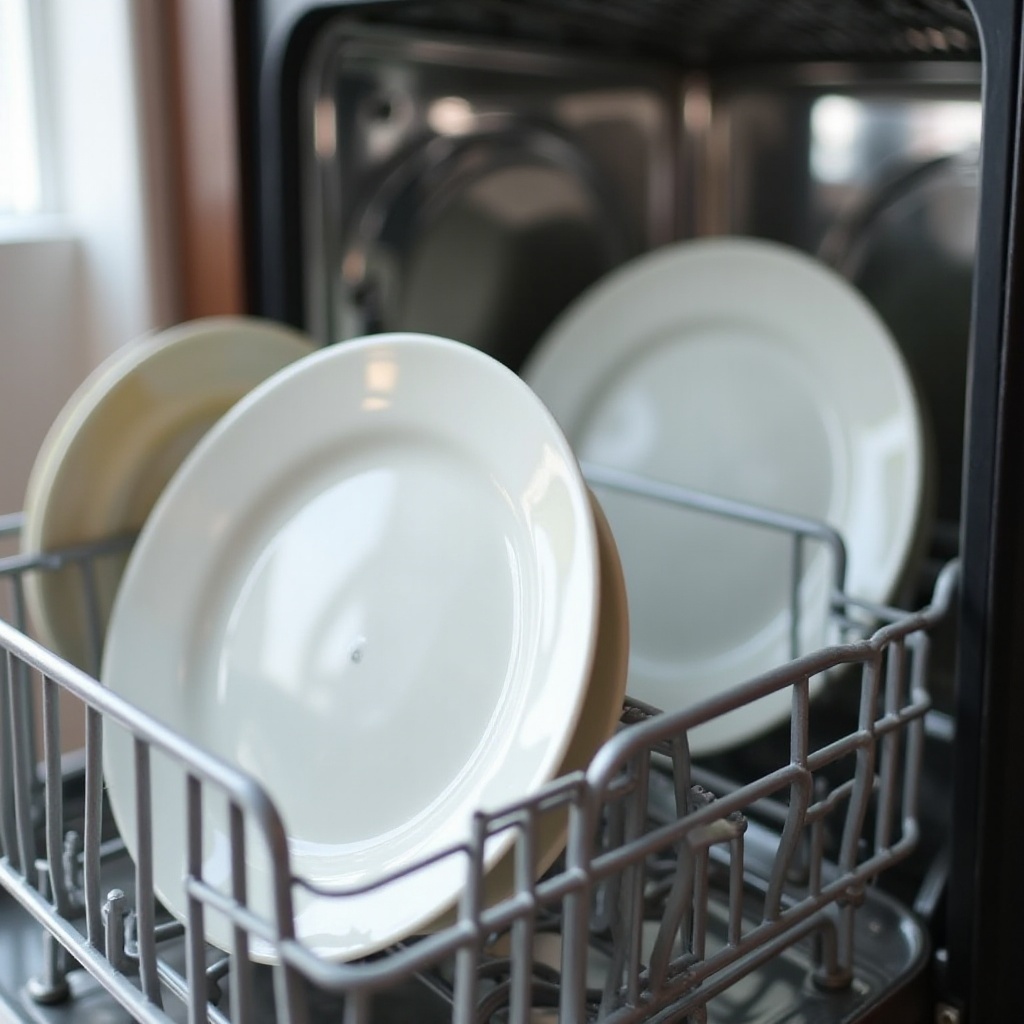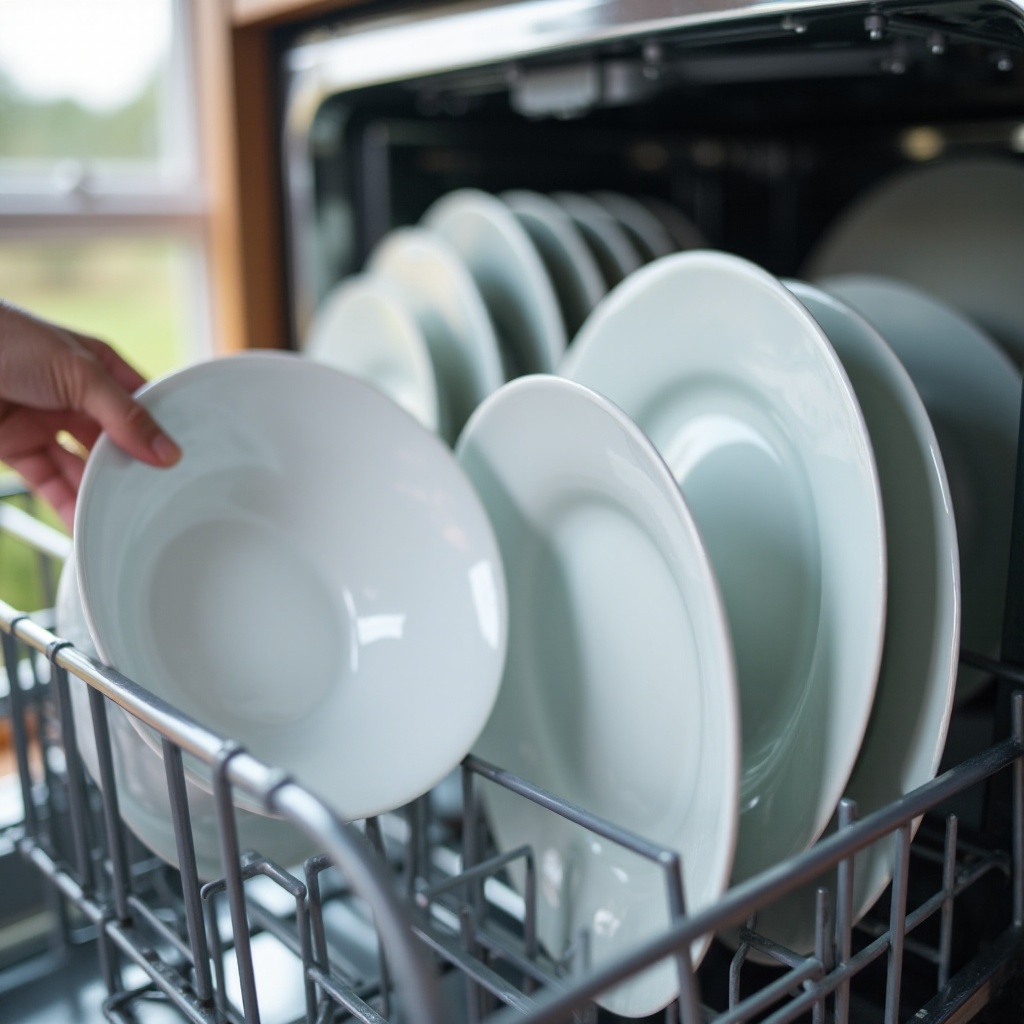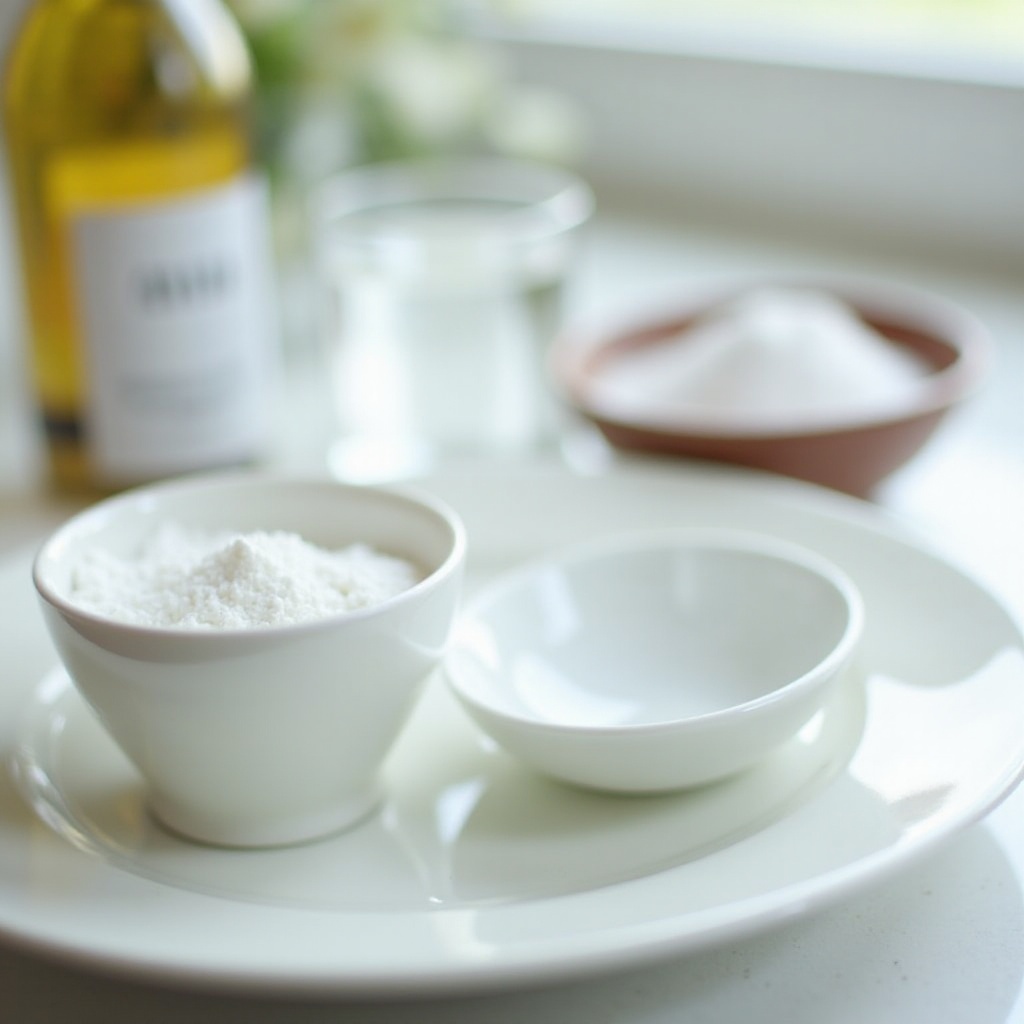Introduction
Facing stubborn white spots on dishes after running the dishwasher can be irritating. These unsightly marks not only detract from the shine of your utensils but can also raise questions about cleanliness. Often caused by minerals in hard water and leftover detergent residue, these spots can be resolved with the right techniques and understanding. Implementing effective measures ensures spotless dishes and a more satisfying dining experience.

What Causes White Spots on Dishes?
Comprehending the causes can help develop a targeted approach to eliminating them.
The Impact of Hard Water
One of the primary culprits of white spots is hard water. It is rich in minerals like calcium and magnesium that can stick to dish surfaces, leaving a chalky residue. This residue persists even after the cleaning cycle. Understanding the nature of hard water in your area can facilitate better preventive and corrective measures.
Dishwasher Detergent Residue
Excessive or incorrect detergent use can also lead to white spots. If not thoroughly rinsed, detergent can leave a film on the dishes. This is often amplified by inappropriate dishwasher settings or overloading the machine, which prevents proper rinsing.
Knowing these causes stretches beyond mere identification and leads us to focus on how hard water can affect dishwasher performance.
How Hard Water Affects Your Dishwasher
Water quality plays a significant role in the efficiency of your dishwasher.
Identifying Hard Water Signs
Spotting issues with hard water is the first step in mitigation. Not only do dishes suffer, but mineral buildup can also appear on faucets and showerheads. To confirm hard water presence, utilize affordable hardness test kits designed for home use.
Solutions for Water Softeners
Once hard water is confirmed, consider installing a water softener. This device replaces problematic minerals with sodium ions, effectively softening the water. Additionally, using dishwasher-specific salts assists in reducing mineral deposits.
Combining water softening solutions with optimized dishwasher settings can significantly reduce the occurrence of white spots.
Optimizing Your Dishwasher Settings for Spotless Dishes
Proper dishwasher operation is crucial for eliminating unwanted residue.
Understanding Dishwasher Cycles
Each dishwasher cycle is tailored for certain cleaning needs. Ensure you select cycles that match the soil level and load size. For generally soiled dishes, the standard wash suffices, but a heavy-duty cycle might be required for heavily soiled items to prevent spots and residue.
Temperature and Cleaning Efficiency
The efficiency of the dishwasher is heavily influenced by the water temperature. Ideally, it should be set between 120–150°F for optimal detergent dissolution and cleaning power. Adjust the temperature settings accordingly, but consult the appliance guide to avoid potential damage.
After optimizing your dishwasher settings, employing the right detergents and rinse aids can further enhance cleaning performance.
The Role of Detergents and Rinse Aids
Correct product usage is a game-changer in achieving shiny and spotless dishes.
Choosing The Right Detergent
Select a high-quality, compatible detergent that suits your machine. Products designed for use in various water types maximize cleaning outcomes. Follow the recommended doses to avoid excess residues.
Benefits of Rinse Aids
Rinse aids are essential as they promote water sheeting off your dishes, thereby minimizing spots and streaks. Add rinse aid to the proper compartment in your dishwasher to enhance drying and maintain a gleaming finish.
Incorporating consistent maintenance habits along with correct product use extends the benefits.
Regular Maintenance Tips for Your Dishwasher
Regular upkeep ensures your dishwasher functions optimally and extends its lifespan.
Cleaning Dishwasher Components
Frequently clean essential parts like filters, spray arms, and dispensers. Food particles and soap scum can accumulate, impeding efficiency. Wipe these elements with a soft cloth and mild detergent.
How Often to Perform Maintenance
Conduct this maintenance monthly to prevent build-up and maintain top performance. Consistent checks safeguard against major malfunctions and ensure your appliance continues delivering spotless results.
Complementing these maintenance tips with natural remedies offers an eco-friendly option to combat white spots.

Natural Remedies to Prevent White Spots
Natural options abound for those looking to sidestep commercial products.
Vinegar Rinse Method
Vinegar's acidity dissolves mineral deposits. Place a cup of white vinegar on the top rack of your dishwasher monthly and run a cycle without dishes to remove build-up.
Lemon Juice as a Natural Cleaner
Lemon's natural acidity is effective for cleaning. Squeeze the juice from two lemons into a cup and run a hot cycle with the dishwasher empty. This helps in tackling mineral residues.
By integrating these methods, your dishes will consistently emerge from the dishwasher without a trace of white spots, creating a delightful and reassuring experience with every wash.

Conclusion
Through understanding and strategic intervention, white spots on your dishes can be eradicated. Employ water softeners, optimize dishwasher settings, use quality detergents and rinse aids, maintain your machine regularly, and explore natural cleaning methods. These practices will ensure your dishes remain spotless, your dishwasher functions optimally, and your dining experiences remain uncompromised.
Frequently Asked Questions
Why do my dishes have white spots even after using a rinse aid?
Your water may be too hard or the dishwasher settings might need adjustment for better detergent performance. Consider testing water quality and adjusting settings.
How do I know if my home has hard water?
Purchase a home water test kit or look for signs such as mineral deposits on faucets, soap scum, and dish residue.
Are there eco-friendly alternatives to chemical rinse aids?
Yes, white vinegar and lemon juice effectively reduce spots and streaks, offering natural alternatives to chemical rinse aids.
